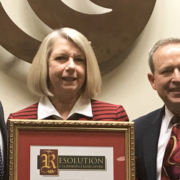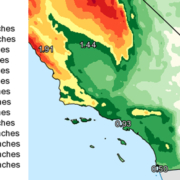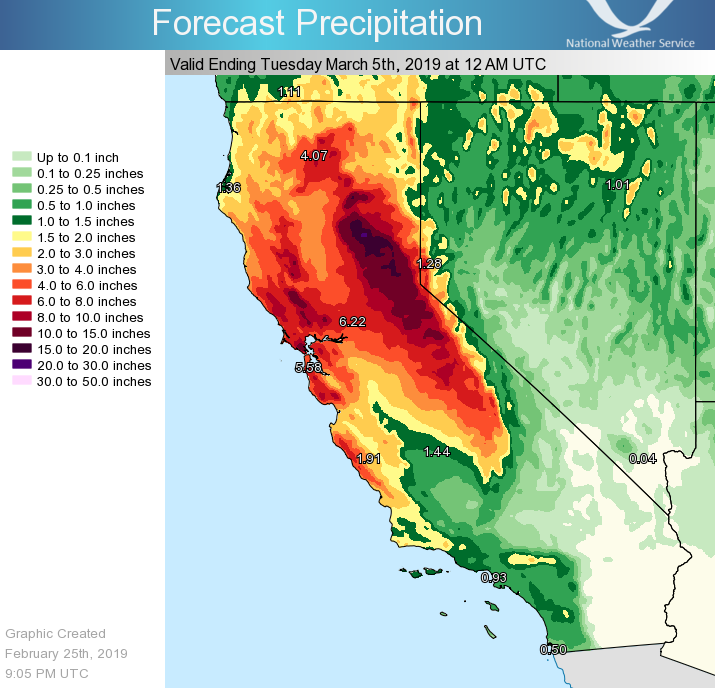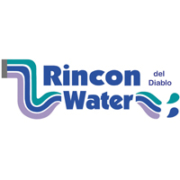After 23 years at the helm of the San Diego region’s wholesale water agency, General Manager Maureen Stapleton is stepping down – and leaving an enormous legacy.
“The positive impact of Maureen’s leadership of the Water Authority and management of this region’s water supply cannot be overstated,” said Jim Madaffer, chair of the San Diego County Water Authority’s Board of Directors. “She has also been an important leader in our civic affairs for three decades and has dedicated countless hours to the betterment of our entire region. She will be greatly missed.
“Her name is synonymous with water in San Diego – for good reason,” Madaffer said. “Since 1996, Maureen has guided a dynamic agency that continues aggressively developing a comprehensive array of water supply and infrastructure projects designed to diversify the region’s water resources and improve the region’s water supply reliability.”
Stapleton announced her plans today to the Board of Directors and staff. Upon Stapleton’s departure, Deputy General Manager Sandy Kerl, who has more than 25 years of experience in public administration including a decade at the Water Authority, will be the acting general manager while a search for the Water Authority’s next general manager is under way.
“The success of the Water Authority over the past two decades is testament to the vision of the Board of Directors, the passionate commitment and dedication of the Water Authority’s staff and management team, the partnership we forged with our 24 member agencies, and the unwavering support of the San Diego region’s civic leaders,” Stapleton said. “I am immensely proud of our shared accomplishments, and I will greatly miss my Water Authority colleagues and esprit de corps we shared carrying out the Water Authority’s mission to provide our region with a safe and reliable water supply.”
‘Instrumental in the growth and development of our region’
Former San Diego Mayor Jerry Sanders, now President and Chief Executive Officer of the San Diego Regional Chamber of Commerce, called Stapleton “instrumental in the growth and development of our region. Under Maureen’s leadership, the Water Authority has helped propel San Diego’s economy by ensuring our region has a diversified, highly reliable water supply – and the infrastructure system needed to produce and treat water, store it, and deliver it to millions of San Diegans.”
Stapleton’s career includes many milestones, including successfully negotiation the landmark 2003 Colorado River Quantification Settlement Agreement, the nation’s largest farm-to-urban water conservation-and-transfer agreement that remains a cornerstone of water management in the Southwest.
Under her guidance, the Water Authority implemented cutting-edge urban water conservation programs that have helped to reduce per capita water use in the San Diego region by more than 40 percent since 1990.
In 2013, the Water Authority won the Association of Metropolitan Water Agencies’ Platinum Award for Utility Excellence, the organization’s highest honor for outstanding achievement in implementing nationally recognized best practices for effective utility management. Three years later, AMWA bestowed its Sustainable Water Utility Management Award on the Water Authority, saying the agency’s “sustainability mindset saves ratepayers money, reduces the environmental impacts of projects and operations, conserves energy and water, and helps the agency thrive in a changing climate.”
Agency mission and projects continue to move ahead
In 2017, the Association of California Water Agencies presented the Water Authority with the Clair A. Hill Water Agency Award for Excellence for innovation and excellence in water resources management with its addition of supplies from the Carlsbad Desalination Project – the largest seawater desalination plant in the Americas.
The same year, the Water Authority won the American Society of Civil Engineers’ Outstanding Civil Engineering Achievement Award – the top international engineering award – for having the foresight and dedication to build the Emergency & Carryover Storage Project. That $1.5 billion system of dams, reservoirs, pump stations, pipelines and tunnels, to protect the region’s 3.3 million people and $220 billion economy from extended dry periods or emergencies that could disrupt imported water deliveries.
Said Madaffer: “While Maureen’s departure will leave a significant hole, I’m confident in the leadership team that we have assembled both on the Board of Directors at the senior staff level so that the important work of the Water Authority will continue with the same diligence as it has for decades.”











